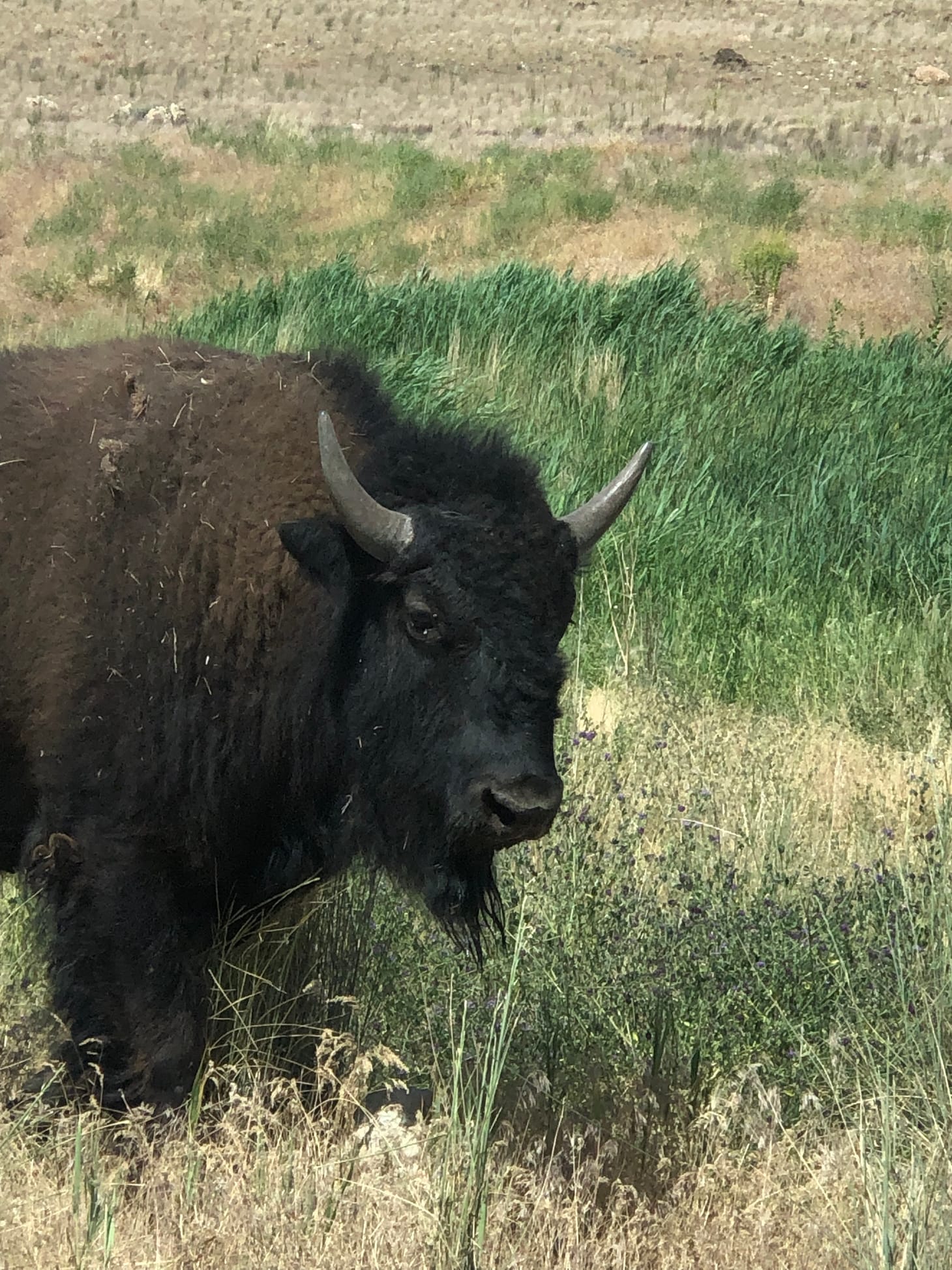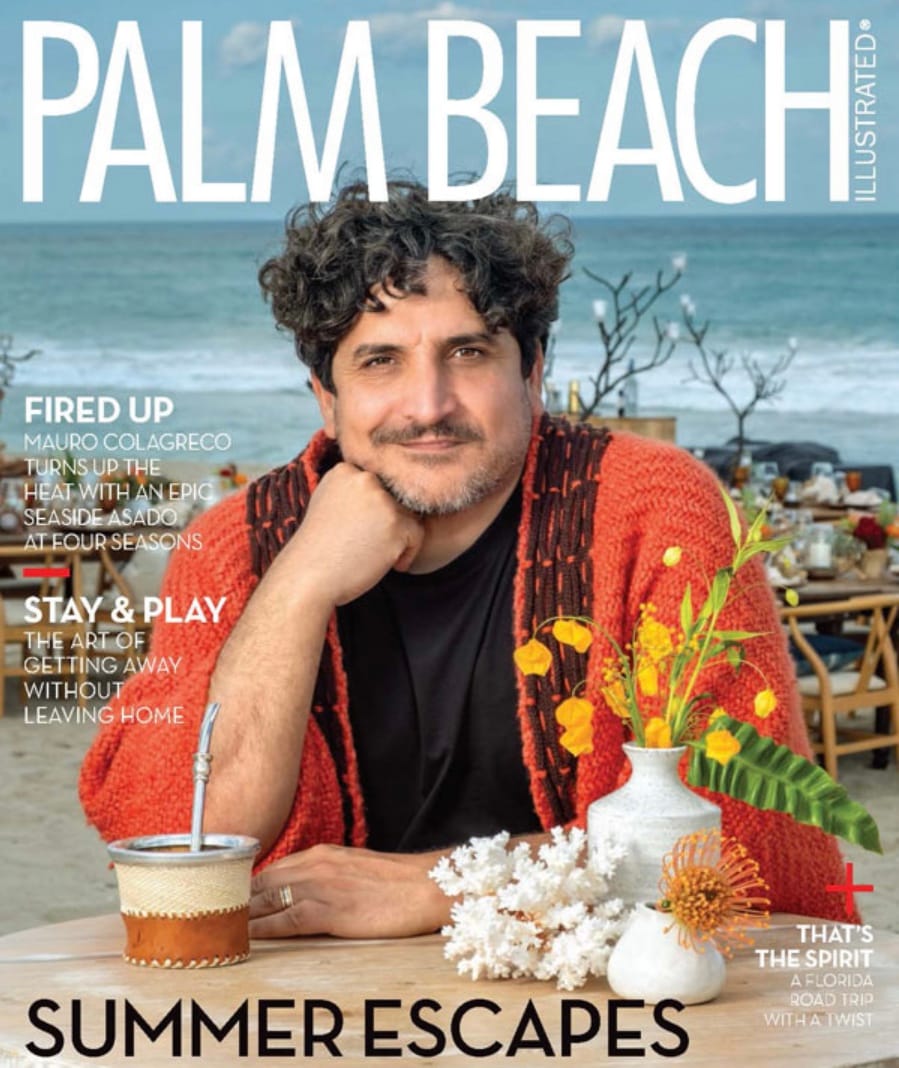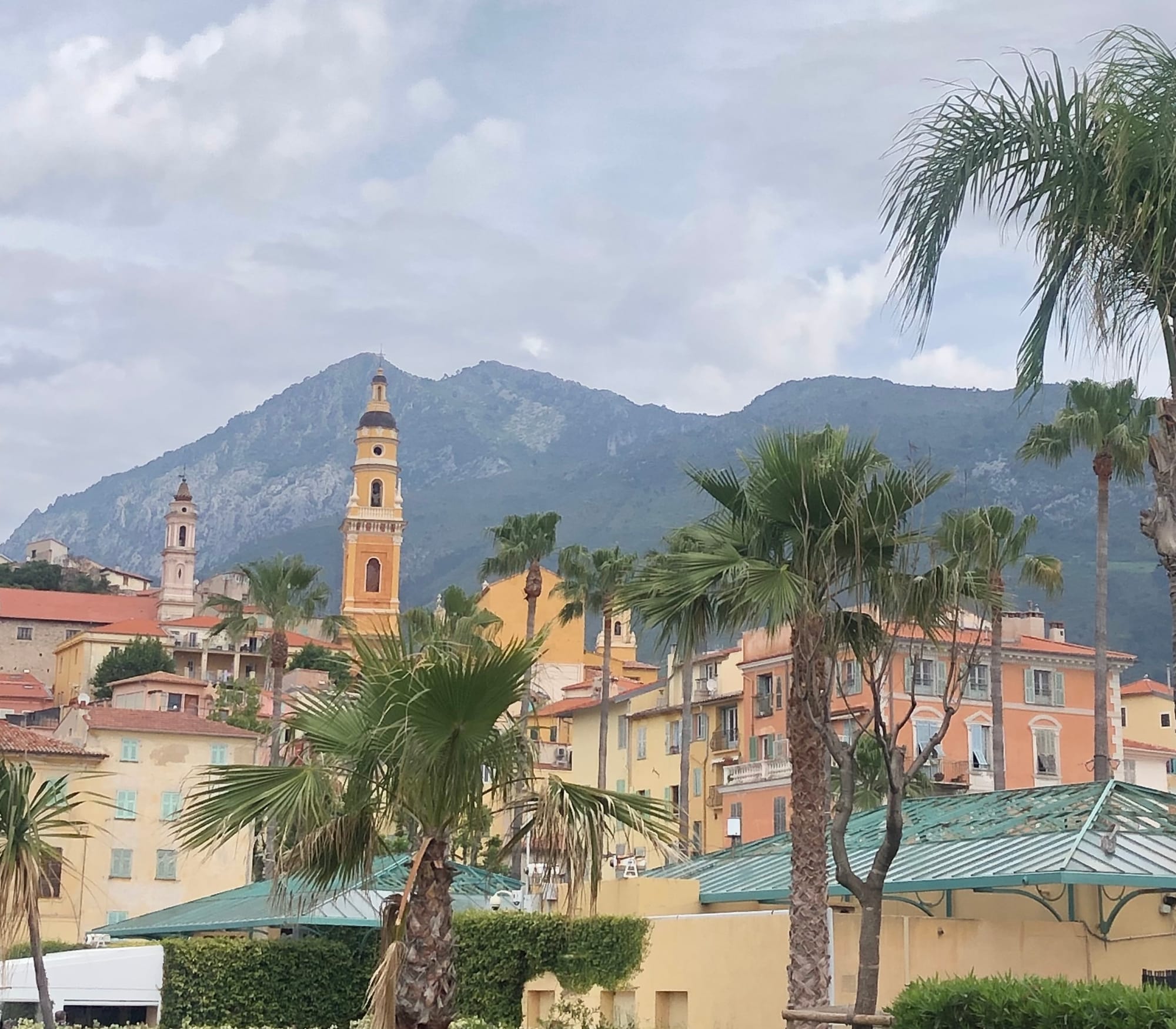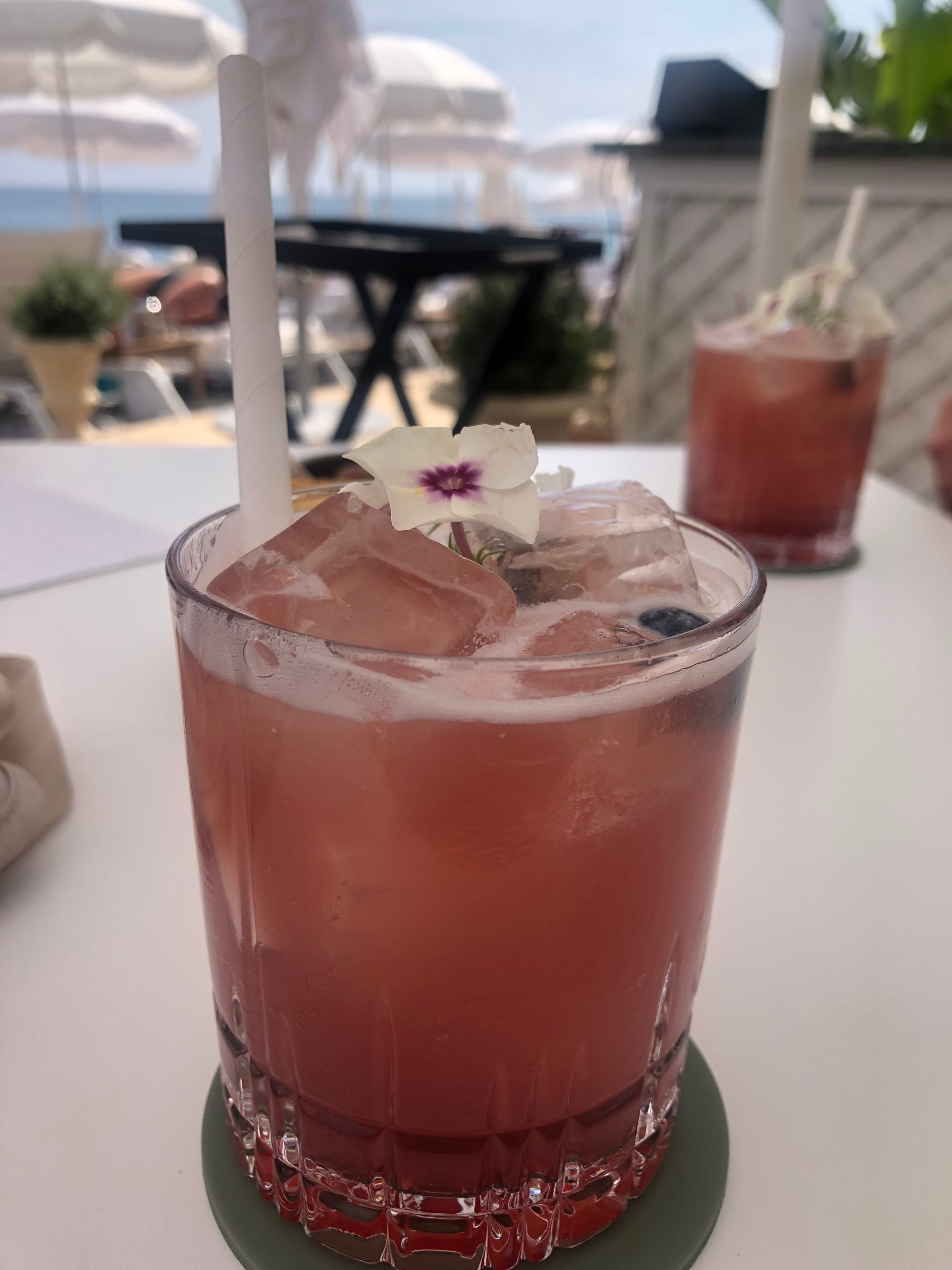The Ballad of Ben Lomond
Plus, a profile of Chef Mauro Colagreco, an ode to the Menton lemon, and a feminist (maybe) shark flick.

I got back from Utah Wednesday night. While there, I discovered that it can be redundant to use "Mountain" and "Ben" when referring to the same peak, and that I walk too fast for my sister, who, in fact, walks too slowly for me.
I also learned that it is enjoyable to go bison trekking, although some might – and did — argue quite forcefully that we would be looking for buffalo, for crying out loud.
For the record, here's what makes these two distinct species different:
- Bison have huge humps at their shoulders.
- Bison heads are way bigger than buffalo heads.
- Bison have beards and thick coats that they shed during summer.
- Bison have sharp, short horns, where buffalo have long and curved ones.
- Bison are native to North America and Europe, while buffalo are more of an Asia and Africa thing.
If all of this is so, then why the mix-up? According to the Smithsonian Institute, some historians believe European settlers are to blame. The French word for beef is boeuf, and so maybe that's how this happened, because bison are definitely boeuf-y. Or, it could be because bison hides looked like the buff coats that military men wore. Whatever the reason, some folks started using the names interchangeably, which, as you might imagine, is the sort of thing that leads to an argument or two in a national park.
Anyway...
This past Sunday morning, my brother-in-law took us on a joy ride through Antelope Island State Park, where several hundred of these beasts roam. As you can see from the picture above, you can get pretty close to the critters, and you need to be careful when you do. Bison are fast. They can run up to 40 mph, believe it or not, and on top of that they're pretty nimble-footed. But as big and as imposing and horned (!!!) as they are, they aren't aggressive unless they feel threatened. My sister told me that the last time they went for a ride through the park, they saw a bison ram into the side of a speeding car. The bison was fine. The car? Not so much. That's what you get for thinking you can zoom past them without repercussions. Bison are the new Ben Lomond as far as I am concerned.
Lucky for us, the Utah Department of Natural Resources (DNR) has some handy tips for those who may find themselves on a bison's shit list. They are:
- When a bison stops what it is doing to look at you, back away.
- If the bison raises its tail slightly, it is aggravated. Back away.
- If its tail is raised high, the bison is ready to charge (ed note: What I find interesting about this piece of advice is that it fails to say whether you should back away, cry for mercy, or give up and take a big bison noggin or horn to the chin. As a public service, I should write the DNR for clarification. Wouldn't want anyone getting trampled).
The DNR also counsels that if you are running and some aspect of the above is going on, then you need to slow down, walk, and stay as far away from the bison as you possibly can. If there is no safe route to pass the bison, then go back the way you came. I'm not sure what you're supposed to do if the bison follows you, unfortunately. Again, that's for me to take up with the DNR.
Having said all this, the number one danger in this park is actually not the bison. It is the hot, dry climate that will slow you down and exhaust you as you hike, making it easier for a bison to overtake you and, as my sister says, "wear your pelt like a trophy." No thank you to that, and especially not on my first trip to Utah. I will stay in the car, in the air conditioning, and and I will quietly roll the window up and down for my money shots. But now that I know how this works, who knows what the next trip will bring?
Firestarter
(or "Speaking of boeuf...")

When Italo-Argentine chef Mauro Colagreco opened his restaurant, Florie’s, at the Four Seasons Resort Palm Beach five years ago, he gazed at the oceanfront and dreamed about hosting a huge asado (or Argentine-style cookout) in the sand.
“They told me, ‘No, it’s impossible,’” he says, noting the county ordinance prohibiting fires of any kind or size on the beach. “We’d have to get too many permissions.”
But Colagreco likes playing with fire. It’s why Mirazur, his restaurant in Menton, France, has three Michelin stars and a bevy of discerning diners angling for a hard-to-get reservation. It’s also part of his heritage. Growing up in Argentina, he learned to start and tend a parrilla (or wood-fire grill) from his grandfather, who gleaned the skill from one of his elders. Fond memories of being at his grandfather’s side, surrounded by family and friends amid the smells of smoke and cooking meat, are what inspired Colagreco’s longtime passion for connecting over memorable meals. He had no doubt that the beach asado he’d been conjuring in his mind would be unforgettable. He just had to make his case.
Was Colagreco able to host the oceanfront cookout of his dreams? Find out in this cover story I wrote about him for the July issue of Palm Beach Illustrated.
Writing prompt: Did you ever have an idea that someone said couldn't – or shouldn't – be done? If so, what was it, and how did you persuade people to let you do it? What was the end result? If you've had a grand idea, but kept it to yourself for whatever reason, what is that idea and why haven't you said anything about it yet? What's preventing you from giving it a go?
Menton: The Pearl of the French Riviera

I can certainly understand why Chef Mauro fell in love with Menton, France. Nestled between the Italian border and Monaco, it is one of the loveliest places you'll ever see, with its pastel-hued buildings and narrow, winding streets. There are beautiful, lush gardens here, smaller crowds, and a slower pace of life.
The town is famous for its lemons, which are larger than what you'd find in a grocery store here and have much thicker skins. They taste like a really herbal Meyer lemon – slightly sweet with maybe a hint of lemongrass and/or basil. You can eat all of it, including the skin, and I can only imagine the lemon curd or preserves you could make from these. It's just a heavenly piece of citrus, and I don't think I'm saying that just because I was in awe of this picture-perfect town. I'm saying it because these lemons are really, really good.
But their existence is threatened. The Riviera is, without a doubt, a beautiful place to visit. Because of that, new hotels and villas stand where lemon orchards used to be. Now, only 56 small farms grow the premium lemons, and those producers fear that climate change will adversely impact the perfect microclimate that makes Menton such a good place to grow this special citrus. Though three years of drought haven't hurt the town's prized crop yet, farmers know they've been lucky and will need to adapt to these changes sooner, rather than later.
Here's hoping their efforts are successful.
A Day in Provence Cocktail

Since we're talking about Menton lemons, here's a cocktail I had in Nice that showed off this citrus nicely. It's called "A Day in Provence" and while I know the ingredients, I don't know the measurements of each, so you'll have to play around with them until you find something that tastes just right to you.
Here's what goes in it: gin, creme de cassis, lavender simple syrup and some Menton lemon juice and/or zest. I think there was soda water too. I know there were blackberries and blueberries in the drink, and obviously a pretty flower. It was an enjoyable sip, all in all. You'll probably need to substitute a Meyer lemon for the Menton one, for obvious reasons. And, if you don't have lavender, this might be equally good with a rosemary and/or thyme simple syrup. Play with it and see where things take you. And if you try this at home, please let me know how it turned out!
Endnotes
Obsession: The cappucinos at Wasatch Roasting Company in Ogden, UT. What a super-cute spot! It roasts its beans in-house and uses honey from the owner's beehives in some of its drinks. If you're an altitude-drowsy visitor like I was this past Saturday morning, these friendly folks will concoct just the right brew for you. Lucky for me, they also sell bags of their coffee online. Be sure to check them out!
Confession: A couple of weeks ago, I wondered aloud whether I should watch Netflix's Under Paris, which has since become one of the most-watched films on the streaming platform. Well I did it, folks, and I have no regrets. If you're in the market for a highly implausible, profoundly ridiculous, but still satisfying film about a feminist (I suppose) shark that's cruising the Seine for snacks, then this one is for you, especially if you're drinking.
If you're looking for a funny period piece with odd uses of swear words, then you should try: Wicked Little Letters with Olivia Colman and Jessie Buckley. Based on a weird-but-true story, Colman plays a deeply devout and conservative woman who begins receiving anonymous profane letters. Police charge a feisty, foul-mouthed Irishwoman named Rose (Buckley) with the crime, but when something seems off about that, a handful of local females investigate. There's a subtle sight gag in this one that I absolutely loved...
Where I hope you'll donate this week: The Breast Cancer Research Foundation (BRCF) aims to prevent and cure breast cancer by advancing the world's most promising research. Approximately 2.3 million women around the globe were diagnosed in 2021, and incidence rates are on the rise. Breast cancer is the leading cause of cancer death in the world’s poorest countries and the second leading cause of cancer death in American women. BRCF wants to put an end to breast cancer and the way to do it is through research. Please consider a gift to BRCF so they can make that dream a reality. Thank you.
Boundless gratitude alert: To the doctors and staff at Utah Hematology and Oncology for doing everything in their power to help my sister fight breast cancer, little by little, day by day, month by month.
Paige Bowers Newsletter
Join the newsletter to receive the latest updates in your inbox.




